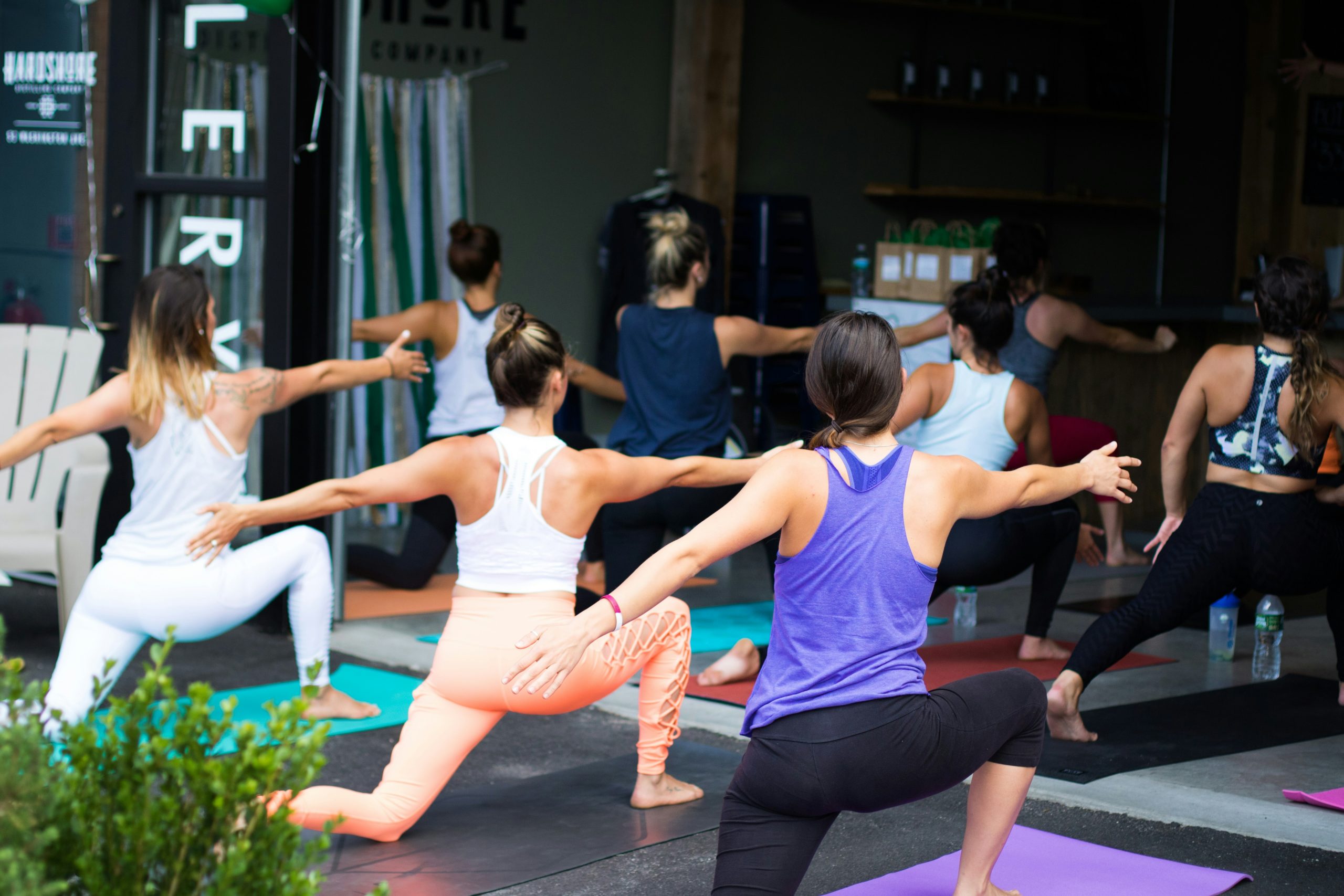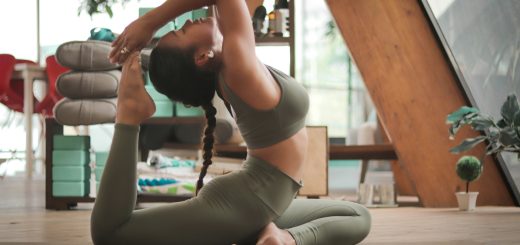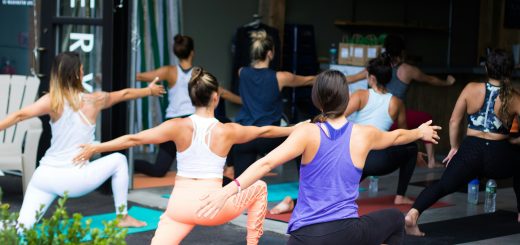Yoga for Inner Peace: Finding Calm in Chaotic Times

Before diving in, please note: This post is for informational purposes only. If you’d like to know more about how we approach topics, feel free to check out our friendly Disclaimer Page.
Hey there, amazing readers! 🖐️ Just a quick note: yes, we know there are a lot of ads here. Trust us, we get it—it’s not the prettiest look, but they help us keep this blog alive and kicking. Those pesky little ads cover the costs of all the behind-the-scenes magic, from hosting and tech stuff to creating content we hope you’ll love.
We’re committed to delivering quality posts, and your support (even just sticking around despite the ads) means everything to us. So, bear with us, and thanks for helping us keep the good vibes rolling. Now, on to the fun stuff! 😉
TRANSLATE BUTTON AT THE END OF THE ARTICLE
Overview
In today’s fast-paced world, finding inner peace can be a challenge.
The constant demands of work, family, and daily life can leave us feeling overwhelmed and stressed.
However, yoga offers a powerful solution for finding calm amidst the chaos.
By combining physical movement, mindfulness, and meditation, yoga can help us cultivate inner peace and serenity.
In this article, we will explore the benefits of yoga for inner peace, the connection between yoga and tranquility, techniques for cultivating inner peace through yoga practice, and how to integrate yoga into daily life for lasting serenity.
Understanding the Benefits of Yoga for Inner Peace
Yoga has been practiced for centuries and is renowned for its numerous physical and mental health benefits.
When it comes to inner peace, yoga provides a holistic approach that addresses both the body and the mind.
The physical postures, known as asanas, help release tension and promote relaxation.
The breathwork and meditation techniques teach us to be present in the moment, reducing anxiety and promoting mental clarity.
By incorporating yoga into our lives, we can experience improved emotional well-being, reduced stress levels, and a greater sense of inner peace.
Exploring the Connection between Yoga and Inner Peace
Yoga and inner peace go hand in hand.
The practice of yoga encourages us to slow down, turn inward, and connect with ourselves on a deeper level.
Through the physical postures and breathwork, we release physical and mental tension, allowing us to find a sense of calm and tranquility.
Additionally, yoga philosophy teaches us valuable lessons about non-attachment, acceptance, and gratitude, which are essential for cultivating inner peace.
By immersing ourselves in the practice of yoga, we can create a powerful connection between our bodies, minds, and spirits, leading to a lasting state of inner peace.
How Yoga Can Help you Find Inner Balance and Serenity
Yoga offers a variety of tools and techniques that can help us find inner balance and serenity.
One of the key ways yoga achieves this is by focusing on mindfulness.
Mindfulness is the practice of being fully present in the moment, without judgment or attachment.
Through the practice of yoga, we learn to bring our awareness to our breath, our body, and our thoughts, allowing us to let go of stressful thoughts and worries.
By cultivating mindfulness, we can find a sense of inner balance and serenity, even in the midst of chaotic times.
Techniques for Cultivating Inner Peace through Yoga Practice
There are several techniques within the yoga practice that can help us cultivate inner peace.
One powerful technique is the practice of yoga nidra, also known as yogic sleep.
This deep relaxation technique involves lying down in a comfortable position and following a guided meditation that takes us into a state between wakefulness and sleep.
Yoga nidra helps to release tension from the body and calm the mind, allowing us to experience a deep sense of inner peace.
Another technique is mantra repetition, where we repeat a specific word or phrase during our practice.
Mantras can help focus the mind and bring us into a state of tranquility.
Choosing a mantra that resonates with us personally can enhance the effectiveness of this technique.
Incorporating Mindfulness and Meditation in your Yoga Routine
Mindfulness and meditation are integral parts of yoga that can greatly contribute to finding inner peace.
By incorporating mindfulness into our yoga routine, we become more aware of our body and breath, allowing us to be present and fully engage in the practice.
Meditation, on the other hand, helps to quiet the mind and bring about a sense of inner stillness.
By setting aside a few minutes each day to meditate, we can cultivate a peaceful state of mind that extends beyond our yoga practice.
The Role of Breathing Exercises in Attaining Inner Peace
Breathing exercises, or pranayama, play a vital role in attaining inner peace through yoga.
Our breath is intricately linked to our emotional state, and by consciously regulating our breath, we can influence our mental and emotional well-being.
Deep, slow breathing activates the parasympathetic nervous system, which helps to calm the body and mind.
Techniques such as alternate nostril breathing and diaphragmatic breathing can be practiced both on and off the mat to promote inner peace and reduce stress.
Yoga Poses for Relieving Stress and Promoting Inner Peace
Certain yoga poses are particularly effective in relieving stress and promoting inner peace.
Forward folds, such as Uttanasana (Standing Forward Bend) and Paschimottanasana (Seated Forward Bend), help to calm the nervous system and release tension from the body.
Restorative poses, such as Savasana (Corpse Pose) and Balasana (Child’s Pose), provide deep relaxation and allow us to surrender to a state of tranquility.
Including these poses in our yoga practice can help us find relief from stress and cultivate inner peace.
Creating a Peaceful Environment for your Yoga Practice
Creating a peaceful environment for our yoga practice can greatly enhance our ability to find inner peace.
Start by finding a quiet and clutter-free space where you can practice without distractions.
Consider incorporating elements of nature, such as plants or natural light, to create a calming atmosphere.
You may also choose to use essential oils or play soothing music to further promote relaxation.
By creating a peaceful environment, we can set the stage for finding inner peace through our yoga practice.
Nurturing Inner Peace through Yoga Philosophy and Wisdom
Yoga philosophy offers valuable teachings and wisdom that can help us nurture inner peace.
The Yamas and Niyamas, which are moral and ethical principles in yoga, guide us in living a balanced and peaceful life.
Practicing non-violence, truthfulness, and contentment, among other principles, can bring about a greater sense of inner peace.
Additionally, studying sacred texts such as the Yoga Sutras of Patanjali or the Bhagavad Gita can provide further insights into the path of inner peace.
Establishing a Consistent Yoga Practice for Lasting Inner Peace
To cultivate lasting inner peace through yoga, it is important to establish a consistent practice.
Set aside dedicated time each day for your yoga practice, even if it’s just a few minutes.
Consistency is key in reaping the benefits of yoga for inner peace.
Consider creating a routine that includes a combination of asanas, pranayama, and meditation.
By making yoga a regular part of your life, you can experience a deeper sense of inner peace that extends beyond your practice.
Cultivating Inner Peace Beyond the Yoga Mat: Integrating Yoga into Daily Life
Finally, to truly cultivate inner peace, it is essential to integrate yoga into daily life.
The principles and practices of yoga can be applied off the mat, helping us navigate the challenges of daily life with a greater sense of calm and ease.
Mindfulness, meditation, and breathing techniques can be used at any time to bring us back to the present moment and find inner peace amidst chaos.
By embodying the lessons of yoga in our interactions, choices, and mindset, we can cultivate lasting inner peace that permeates every aspect of our lives.
Conclusion
In the midst of chaotic times, finding inner peace is essential for our well-being and happiness.
Yoga offers a powerful and holistic approach to cultivating inner peace.
By understanding the benefits of yoga, exploring the connection between yoga and tranquility, and incorporating techniques such as mindfulness, meditation, and breathing exercises, we can find inner balance and serenity.
By practicing yoga regularly, creating a peaceful environment, embracing yoga philosophy, and integrating yoga into daily life, we can experience lasting inner peace that extends beyond the boundaries of our yoga mat.
So, roll out your mat, take a deep breath, and embark on your journey towards inner peace through the transformative practice of yoga.

The Enlightenment Journey is a remarkable collection of writings authored by a distinguished group of experts in the fields of spirituality, new age, and esoteric knowledge.
This anthology features a diverse assembly of well-experienced authors who bring their profound insights and credible perspectives to the forefront.
Each contributor possesses a wealth of knowledge and wisdom, making them authorities in their respective domains.
Together, they offer readers a transformative journey into the realms of spiritual growth, self-discovery, and esoteric enlightenment.
The Enlightenment Journey is a testament to the collective expertise of these luminaries, providing readers with a rich tapestry of ideas and information to illuminate their spiritual path.
Our Diverse Expertise 🌟
While our primary focus is on spirituality and esotericism, we are equally passionate about exploring a wide range of other topics and niches 🌍📚. Our experienced team is dedicated to delivering high-quality, informative content across various subjects ✨.
To ensure we provide the most accurate and valuable insights, we collaborate with trusted experts in their respective domains 🧑🏫👩🏫. This allows us to offer well-rounded perspectives and knowledge to our readers.
Our blog originally focused on spirituality and metaphysics, but we’ve since expanded to cover a wide range of niches. Don’t worry—we continue to publish a lot of articles on spirituality! Frequently visit our blog to explore our diverse content and stay tuned for more insightful reads.






